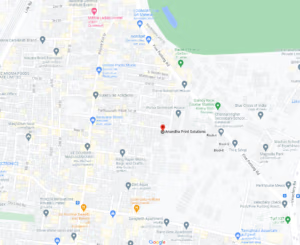
The Power of Branding as tool in label industry
In today’s competitive market, branding is more than just a logo or a catchy tagline—it’s the heart of a business’s identity. For the label industry, where products are often the first point of contact with consumers, effective branding can be a game-changer.
1. First Impressions Matter
Labels are often the first thing customers notice on a product. A well-designed label with clear, consistent branding can attract attention and convey the quality of the product inside. In a crowded market, where dozens of similar products vie for attention, strong branding on a label can make all the difference.
2. Building Trust and Recognition
Consistent branding across all labels builds trust with consumers. When customers repeatedly encounter the same brand elements—such as logos, colors, and fonts—they start to associate those elements with the product’s quality and reliability. Over time, this recognition can turn into brand loyalty, driving repeat purchases and fostering long-term customer relationships.
3. Communicating Your Brand’s Story
Labels are a canvas for storytelling. Through careful design and strategic messaging, labels can communicate a brand’s values, mission, and personality. Whether it’s a commitment to sustainability or a focus on luxury, the label is a powerful tool to convey these aspects to consumers instantly.
4. Differentiation in a Saturated Market
In industries with numerous competitors, branding helps a product stand out. Unique, well-crafted labels can differentiate a product from others on the shelf. This differentiation is not just about being different; it’s about being memorable and appealing to the target audience.
5. Adapting to Consumer Preferences
The label industry is constantly evolving, with new trends emerging regularly. From minimalist designs to bold, colorful patterns, the ability to adapt your branding to these trends can keep your products relevant and appealing. Staying on top of design trends also signals to consumers that your brand is modern and in tune with their preferences.
6. Leveraging Technology for Enhanced Branding
Technology offers new possibilities for branding in the label industry. Digital printing, augmented reality, and smart labels allow for more interactive and personalized branding experiences. These technologies can enhance consumer engagement and create a more dynamic brand presence on the shelf.
7. Sustainability and Ethical Branding
As consumers become more environmentally conscious, branding that highlights sustainability can be a significant advantage. Labels that use eco-friendly materials and communicate a brand’s commitment to sustainability can attract consumers who prioritize these values. Ethical branding can also enhance a brand’s image and resonate with a broader audience.
8. The Role of Branding in Regulatory Compliance
In addition to aesthetics, labels must meet various regulatory requirements. Effective branding can help ensure that all necessary information is presented clearly and compliantly while maintaining a strong brand identity. This balance between compliance and branding is crucial for building consumer trust and avoiding legal pitfalls.
9. Emotional Connection and Brand Loyalty
Branding on labels has the unique ability to forge an emotional connection with consumers. This connection goes beyond the functional aspects of the product, touching on the consumer’s identity, aspirations, and lifestyle choices. For instance, a brand that positions itself as luxurious or eco-friendly can evoke feelings of prestige or responsibility. When consumers emotionally connect with a brand, they are more likely to remain loyal, even in the face of competition.
10. The Role of Color Psychology
Colors are a fundamental aspect of branding, and in the label industry, they play a crucial role in conveying messages and eliciting emotions. Different colors evoke different feelings—blue often suggests trust and stability, green is associated with nature and health, and red can signify excitement or urgency. Understanding and applying color psychology in label design can enhance the brand’s message and influence consumer behavior at the point of sale.
11. Typography as a Branding Element
The choice of typography in label design can significantly impact how a brand is perceived. Serif fonts may convey tradition and reliability, while sans-serif fonts can suggest modernity and simplicity. Handwritten or script fonts can add a personal touch, making the brand feel more approachable. Typography, when used thoughtfully, can reinforce the brand’s identity and ensure that the label communicates the desired message effectively.
12. The Influence of Packaging Trends on Branding
Packaging trends, such as minimalism, vintage-inspired designs, or bold, maximalist aesthetics, can influence how labels are perceived. Brands that align their labels with current trends can appear more relevant and appealing to consumers. However, it’s important to balance trendiness with timelessness, ensuring that the branding remains effective even as trends evolve.
13. Branding for Different Market Segments
The label industry serves a wide range of markets, from luxury goods to everyday essentials. Each market segment has different expectations and preferences when it comes to branding. For instance, luxury products may require sophisticated, high-end label designs that exude exclusivity, while products aimed at budget-conscious consumers might focus on simplicity and value. Tailoring branding strategies to specific market segments ensures that the label resonates with the target audience.
14. The Impact of Globalization on Branding
In an increasingly global market, branding on labels must often appeal to diverse audiences across different cultures. This presents both challenges and opportunities. Brands must be mindful of cultural sensitivities and preferences, ensuring that their branding is appropriate and effective in different regions. At the same time, globalization offers the opportunity to create a consistent, recognizable brand identity that transcends borders, allowing products to succeed in multiple markets.
15. Interactive and Immersive Label Branding
With advancements in technology, labels can now offer interactive and immersive experiences that enhance branding. For example, QR codes or augmented reality (AR) features on labels can lead consumers to videos, games, or additional product information. These interactive elements create a deeper connection with the brand, offering consumers a unique experience that goes beyond the traditional label.
16. Customization and Personalization in Branding
Personalization is becoming a powerful trend in branding, with many consumers seeking products that reflect their individual preferences. The label industry can leverage this trend by offering customized labels that cater to specific consumer needs or occasions. Whether it’s a limited edition run for a special event or a label that allows consumers to add their names, personalized branding can make products feel more special and exclusive, increasing their appeal.
17. The Future of Branding in the Label Industry
Looking ahead, the future of branding in the label industry is likely to be shaped by several key trends. Sustainability will continue to be a driving force, with brands increasingly adopting eco-friendly materials and practices. Technology will also play a significant role, with innovations such as smart labels, which can provide real-time data or track product information, becoming more common. Additionally, as consumers demand more transparency from brands, labels will need to communicate not just the product’s features, but also the company’s values and practices in a clear and honest way.
Branding as tool in label industry! Various Options that can be used in your products through Stickers and Labelling
In branding, stickers and labels play a vital role in reinforcing a company’s image, communicating key messages, and creating a visual identity. Here’s a breakdown of various types of stickers and labels that can be effectively used for branding:
1. Die-Cut Stickers
- Description: These are custom-cut stickers that follow the shape of the design, not just a square or rectangle.
- Use in Branding: Ideal for logos, mascots, or creative shapes that represent a brand. They are visually appealing and highly versatile.
2. Clear Stickers
- Description: Transparent stickers with designs printed on them, leaving no visible background.
- Use in Branding: Great for applying logos or designs onto windows, bottles, or any transparent surface to give a sleek, minimal look while keeping the focus on the logo or design.
3. Holographic Stickers
- Description: These stickers have a shiny, reflective surface that changes colors when viewed from different angles.
- Use in Branding: Popular for technology brands, fashion, or youth-oriented products. They add a futuristic, premium, and eye-catching element to packaging or promotional materials.
4. Vinyl Stickers
- Description: Durable stickers made from vinyl, often water-resistant and UV-protected.
- Use in Branding: Best for outdoor applications or products that will be exposed to harsh conditions. They are long-lasting and ideal for branding equipment, vehicles, or outdoor signage.
5. Paper Stickers
- Description: Standard paper stickers, often more affordable but not as durable as vinyl.
- Use in Branding: Good for short-term promotions, event giveaways, and labeling in situations where durability isn’t a priority.
6. Embossed Labels
- Description: These labels have a raised texture to create a premium, tactile feel.
- Use in Branding: Adds a sense of luxury and exclusivity, often used on wine bottles, premium packaging, or high-end products.
7. Foil Stickers
- Description: Stickers made with metallic foil elements (gold, silver, etc.) to give a shiny, premium appearance.
- Use in Branding: Frequently used in luxury branding, product packaging, and to highlight limited editions or special promotions.
8. Eco-Friendly Stickers
- Description: Made from sustainable, biodegradable, or recycled materials.
- Use in Branding: These appeal to eco-conscious consumers and are ideal for brands that prioritize sustainability in their messaging.
9. Waterproof Labels
- Description: Labels made from durable, waterproof materials such as vinyl or polyester.
- Use in Branding: Excellent for products exposed to water, such as beverages, cosmetics, or bath products. They maintain a professional look even in wet environments.
10. Static Cling Stickers
- Description: Stickers that cling to surfaces using static, without the need for adhesive.
- Use in Branding: Great for temporary promotions on glass surfaces like windows or mirrors. Can be reused multiple times.
11. Scratch-and-Sniff Stickers
- Description: Stickers with a scent that is released when scratched.
- Use in Branding: Engages multiple senses and can create a memorable brand experience, often used in industries like food, cosmetics, or personal care.
12. QR Code Stickers
- Description: Stickers featuring a QR code that links to a brand’s website, promotion, or social media page.
- Use in Branding: An excellent way to integrate digital elements into physical branding. QR codes encourage user engagement and can lead directly to online campaigns.
13. Window Decals
- Description: Large stickers or labels applied to windows, often for advertising or decoration.
- Use in Branding: Perfect for storefronts, these can highlight promotions, brand messages, or even just brand visuals to attract customers.
14. Glossy/Matte Finish Stickers
- Description: Stickers with either a shiny (glossy) or non-reflective (matte) finish.
- Use in Branding: Glossy stickers add vibrancy and shine, ideal for brands looking for a more dynamic look. Matte stickers give a sleek, sophisticated look, better for minimalistic or premium brands.
15. Custom Product Labels
- Description: Tailor-made labels specifically designed for product packaging, with relevant information and branding elements.
- Use in Branding: Essential for packaged products, these labels provide necessary details like ingredients, pricing, and logos, while reinforcing the brand’s identity.
16. Removable Stickers
- Description: Stickers designed to be easily removed without leaving residue.
- Use in Branding: Perfect for promotions, short-term marketing campaigns, or temporary branding applications where clean removal is important.
17. Reflective Stickers
- Description: Stickers that reflect light, making them visible in low-light conditions.
- Use in Branding: Useful for safety products, outdoor gear, or brands that need high visibility in dim environments.
18. 3D Stickers
- Description: Stickers that have a raised, three-dimensional effect.
- Use in Branding: Adds a tactile element to the branding experience, suitable for unique, high-impact brand designs, often used for tech or premium product lines.
Using a variety of these stickers and labels can enhance a brand’s visibility and create a consistent brand identity across different platforms. Each type can be strategically chosen depending on the target audience, the environment in which the sticker will be used, and the brand’s message.
19. Polycarbonate Labels
- Description: Made from polycarbonate, these labels are highly durable and resistant to harsh environmental conditions, chemicals, and abrasions. They can have a glossy or matte finish and often include features like UV protection or scratch resistance.
- Use in Branding: Polycarbonate labels are excellent for industries like automotive, electronics, or heavy machinery. They convey durability and quality, often used for branding products or equipment that require long-lasting, resistant labels in extreme conditions.
20. Polyester Labels
- Description: Polyester labels are tough, heat-resistant, and waterproof. They are known for their ability to withstand challenging environments, including exposure to UV light, chemicals, and moisture. These labels can also be made in clear, white, or metallic finishes.
- Use in Branding: Polyester labels are frequently used in industrial settings, for labeling electronics, appliances, or outdoor products. Due to their durability and clean appearance, they help communicate a brand’s commitment to quality and reliability, making them suitable for companies that need branding in rugged or technical environments.
21. Dome Decal (Domed Stickers or 3D Dome Labels)
- Description: Dome decals are created by adding a clear, resin-like polyurethane coating over a printed label or sticker. This creates a raised, 3D effect, making the decal more visually striking and giving it a glossy, domed finish. The dome also adds a layer of protection, making the decal more durable.
- Use in Branding: Dome decals are often used to give a premium, high-quality look to logos and brand names. The 3D effect and glossy finish make these decals stand out, making them ideal for electronics, automotive branding, promotional items, and any product that needs an eye-catching, high-end appearance.
Conclusion
The label industry is at the forefront of branding innovation, with labels serving as powerful tools for communicating brand identity, values, and stories. As consumer expectations evolve, so too must the strategies used in label branding. By staying attuned to trends, leveraging technology, and focusing on building strong emotional connections, brands can ensure their labels not only attract attention but also foster lasting relationships with consumers. In a world where first impressions are everything, the right branding on a label can turn a simple product into a beloved brand.
Contact Details:
Address:
ANANDHA PRINT SOLUTIONS PVT LTD
32/2, First Floor,
Sathanipet 2nd Street,
Adj. Five Furlong Road,
Maduvinkarai, Guindy,
Chennai, Tamil Nadu,
India- 600 032.
Phone:
+91 98409 64267
Email:
info@aprints.in
sales@aprints.in
admin@aprints.in
accounts@aprints.in
design@aprints.in
Geo – Domestic State Supplies
Andhra Pradesh | Arunachal Pradesh | Assam | Bihar | Chhattisgarh | Goa | Gujarat | Haryana | Himachal Pradesh | Jharkhand | Karnataka | Kerala | Madhya Pradesh | Maharashtra | Manipur | Meghalaya | Mizoram | Nagaland | Odisha | Punjab | Rajasthan | Sikkim | Tamil Nadu | Telangana | Tripura | Uttarakhand | Uttar Pradesh | West Bengal
Geo – Domestic City Supplies
Chennai | Mumbai | Kolkatta | Delhi | Bengaluru | Hyderabad | Coimbatore | Thirchy | Madurai| Salem | Erode | Kanyakumari | Thanjavur | Tirunelveli | Vellore | Tiruppur | Kochi | Thiruvananthapuram | Kozhikode | Thrissur | Kollam | Tumkur | Mangalore | Mysore | Udupi | | Davangere | Dharwad | Hubli | Belgaum | Chitradurga | Karwar | Batkal | Visakhapatnam | Vijayawada | Nellore | Sri City (Tada) | Rajahmundry | Ongole | Tirupathi | Kakinada | Amaravathi | Guntur | Anantapur | Kadappa | Ahmedabad | Surat | Vadodra | Rajkot | Bhavnagar | Jamnagar | Jaipur | Jodhpur | Udaipur | Ajmer
International Supplies
Asia- Malaysia | Singapore | Japan | Korea | Thailand | Myanmar | Indonesia | Vietnam | Cambodia | SAARC- Srilanka | Bangladesh | Nepal | Bhutan | Afghanistan | Africa- Algeria | Ethiopia | Ghana | Nigeria | Uganda | Kenya | Tanzania | Uganda | Zambia | Zimbabwe | Egypt | Middle East- UAE | Kuwait | Qatar | Oman | Kingdom of Saudi Arabia | Bahrain | Jordan | Europe- United Kingdom | Germany | France | Switzerland | Italy | Spain | Portugal | Norway | America– United States Of – America | Canada | Mexico | Brazil | Argentina | Greenland | Other Countries – Russia | Australia






